Helen Melvin is a textile artist creating landscapes in felt, the fibres for which she colours herself in natural dyes mainly grown in her own working dye garden.
Over the last twenty years she has evolved her own unique style which is created not only by the way she felts using fabrics and fibres but also by her unique use of sustainable dyes.
Helen works with the ancient techniques of feltmaking and natural dyeing in a modern contemporary way which prioritises having a minimal impact on the environment.
Her landscapes are in private collections world wide including Australia, Switzerland, Belgium, USA and the Falkland Islands as well as throughout the UK.
She attracts many visitors to her Summer House gallery, working studio and dye garden when it opens for the annual 'North Wales Helfa Gelf' throughout September.
I was lucky enough to attend a one-to-one training in natural dyeing by Helen back in March 2013 at her lovely home in North Wales. You can find out more about her on her website, Fiery Felts.
How long have you been practicing natural dyeing and how did you get into it?
I started natural dyeing about 25 years ago when Myra Ryan a member of my local guild of Weavers Spinner and Dyers ran a two day workshop which was a superb introduction. She also had a dye garden which was the inspiration for mine. I came home from her workshop cut some leaves from a privet hedge and started dyeing. After a few years I perfected the art of dyeing fine merinos in natural dyes so was able to use them in my felt work and everything but my very first pictures are made using naturally dyed fibres and fabrics. As my pictures are likely to be on someone's wall for years I was interested from the beginning in lightfast natural dyeing. For my pictures I use the most lightfast dyes and processes I can and even for my felt scarves and hand spun work I am careful to ensure that the dyes used will last.
When did you establish your dye garden and was that easy?
I started the dye garden about 15 years ago, I say I started but in fact very grandly I have a gardener, Enys Davies, who blew in one day to rescue the shambles my garden had become and turned out to have a passionate interest in dye plants. Not that she want to actually dye anything she just likes growing the dye plants and seeing what I do.
Our relationship is very fruitful as her background is in herbs and native plants and she often thrusts a “weed” under my nose and informs me it is a dye plant. In this way I discovered dyeing with ground ivy, gypsy wort and many others.
We now work together and she grows dye plants for sale on my stall at Wonderwool and Woolfest and she grows the dye plants in her huge greenhouse. I love the dye garden and have about 65 or so dye plants and plants producing natural mordants. Many visitors are struck by seeing the garden as a chemistry laboratory and are fascinated by the alchemy of it.
Some of the plants such as Marigolds and Golden Rod, are found in most gardens, some are wild or hedgerow plants such as Weld, Yarrow and Meadowsweet, and some are grown solely for their dye such as Madder, Woad and Japanese Indigo.
As I walk through the North Wales countryside I keep my eyes open for colour sources too. In this way I have explored the colours produced by amongst others, Meadowsweet, Mares Tails, Alder cones, Gorse flowers (which were spectacular this year) and gall nuts. The first first two are hedgerow plants that grown in profusion in the lanes nearby but even so I pick sensitively and very much less then even 10% of what is available. I am fascinated by foraging for seasonal colour and the idea is spurring me onto my fifth dye book.
You have written a number of dye manuals, could you tell us about them please?
My first dye book Colours of the Earth was produced for the very first Woolfest in Cockermouth in Cumbria and sold out by the morning of the first day. It was based on my workshop notes but I subsequently rewrote and updated it. Now all my books are A4 size with a cover hand-painted with my inks with a distinctive pattern for each book.
The next one I wrote was the Colour of the Sea and Sky on all aspects of indigo dyeing which I have recently updated with the sugar lime vat and much more on fermentation. My third, Colours of the Rainbow, is on using the extracts of Natural dyes to paint fibres and fabrics and my fourth on Eco Dyeing, the Colours of the World which runs the Colour of the Earth very close as my best seller.
You also produce a range of botanical inks. How did they evolve and what do you use them for?
In 2002 I went to Colour Congress in Iowa in the USA. One of the workshops that I managed to a attend was one day of a two day workshop on using natural dyes as paints. I wanted to take this one as I often painted a picture in watercolour before creating a felt picture and watercolours were difficult to translate into natural dyes.
On return I experimented with the dyes as paints not only trying many different ones but testing them for lightfastness which is an often neglected area in natural dyes. About six years ago spurred on by a fellow artist I turned my experiments into a set of inks. Initially there were eight colours but now there are 15 or 16, the numbers vary a bit as I experiment adding an ink or removing one I am not entirely happy with.
Some colours I experiment with to improve, turquoise for example is not an easy one to produce and others I have to alter as a pigment suddenly becomes unavailable. Many of my inks are complex containing 3 or 4 pigments and are my own recipes.
The colours are: red, blue, yellow, bronze, old bronze, royal purple, purple grey, olive green, black, ochre, terracotta, dark terracotta, orange, old gold , and turquoise. A lime green is a new ink but has limited availability. Most are available on my website but I can always be contacted to discuss my inks.
I designed them to be like liquid water colours but I subsequently found that they works as fabric paints. I have used them to paint yarns made from such fibres as ramie, and tencel as well as wool. Some of my customers paint wood with them and at an art fair we tried painting clay vessels, and although I cannot guarantee their weather proofing the effect was vibrant and at an event in my dye gardern and studios many of my talented visitors painted free form batik with my inks before plunging their samples into an indigo vat.
As a freelancer working from home, you've consistently been involved in Helfa Gelf, an open studio event in your region. Has this been important to your work?
For the last ten years I have opened my studio, dye garden and summer house gallery as part of Helfa Gelf North Wales Art Trail and Open Studios. This event takes place over the four weekends in September although few artists, me included, open all weekends. I love it. Over the years the number of visitors has increased and I usually see 80-120 people depending on how many days I open come through my studio to see bubbling dye pots, explore the garden and look at my pictures. Visitors vary, some being interested in my art, others in the natural dyeing and one of my favourite memories is a visitor having taken the lid off the vat sniffing it despite it being labelled “Caution! Very Smelly”. It was a fermented indigo vat, the way Indigo was dyed with for thousands of years and and as an archaeologist he was interested to know what it smelt like. Helfa Gelf is where I sell most of my work.
It takes me along time to produce my art most of which represents not only the beauty of the Welsh Countryside but also the way I feel about the environment. For example Stone Wall which sold in Helfa Gelf three years ago and is on my business card, is not just a picture of a stone wall but is also about the barriers placed in the way of us accessing countryside and at the same time about how barriers put up by man/womankind become broken down and destroyed by nature.
One of the great benefits of Helfa Gelf has been contact with other artists in the area and now when I open I am part of a cluster of 8 artists all with studios within five miles of me and two others in the same village and we meet together two or three times a year.
Has anyone been an inspirational influence or teacher?
The first dye book I bought was Jill Goodwins classic 'The Dyers Manual', which I loved as it made natural dyeing so accessible. I still refer to the wonderful list at the back of her book of colours produced by garden plants although I have never got blue from Elecampane roots.
I followed this with Trudy Von Stralens book 'Indigo Madder and Marigold' and from her I got the idea of making Indigo Sulphonate and that I could mix dyes for complex colours. JN Liles 'The Art and Craft of Dyeing' introduced me to the importance of the proper scouring of fabrics, and Indigo dyeing. Michelle Wipplinger of Earth Hues led a superb three day workshop on using the Earth Hues extract at Colour Congress in Iowa in 2002 and I still use her excellent notes.
Jenny Dean's 'Wild Colour' is another important book to me as is Su Grierson's 'Colour Cauldron'. More recently I splashed out on Dominque Cardon's 'Natural Dyes'.
A workshop by Urike Bogdan on her innovative very light fast wash fast natural dyed cellulose fibres for the Online Guild of Weavers Spinner and Dyers this year has been another superb and informative workshop. After watching Michel Garcia demonstrating his sugar lime vat at Isend 2011 I worked out how to replicate it and then attended a three day workshop with him and I use his sugar lime indigo vat for cellulose fibres.
Why do you think cultivating and using natural dyes is important?
The first time my garden was opened under the National Garden Open Scheme the regional organiser walking around my garden remarked that she had no idea that plants could be used to produce colour. Having a dye garden educates people in possibilities. Natural dyes are a sustainable resource, the colours are superbly vibrant but subtle and exciting. It may not be possible to return the world to using just natural dyes but it satisfies me to know that my pictures are truly an eco product that has not harmed the earth.
Visit Helen's website, Fiery Felts for full details of her fantastic products and workshops.
Photography by Helen Melvin, Justine Aldersey-Williams, Mary Lake and Simon Proffitt





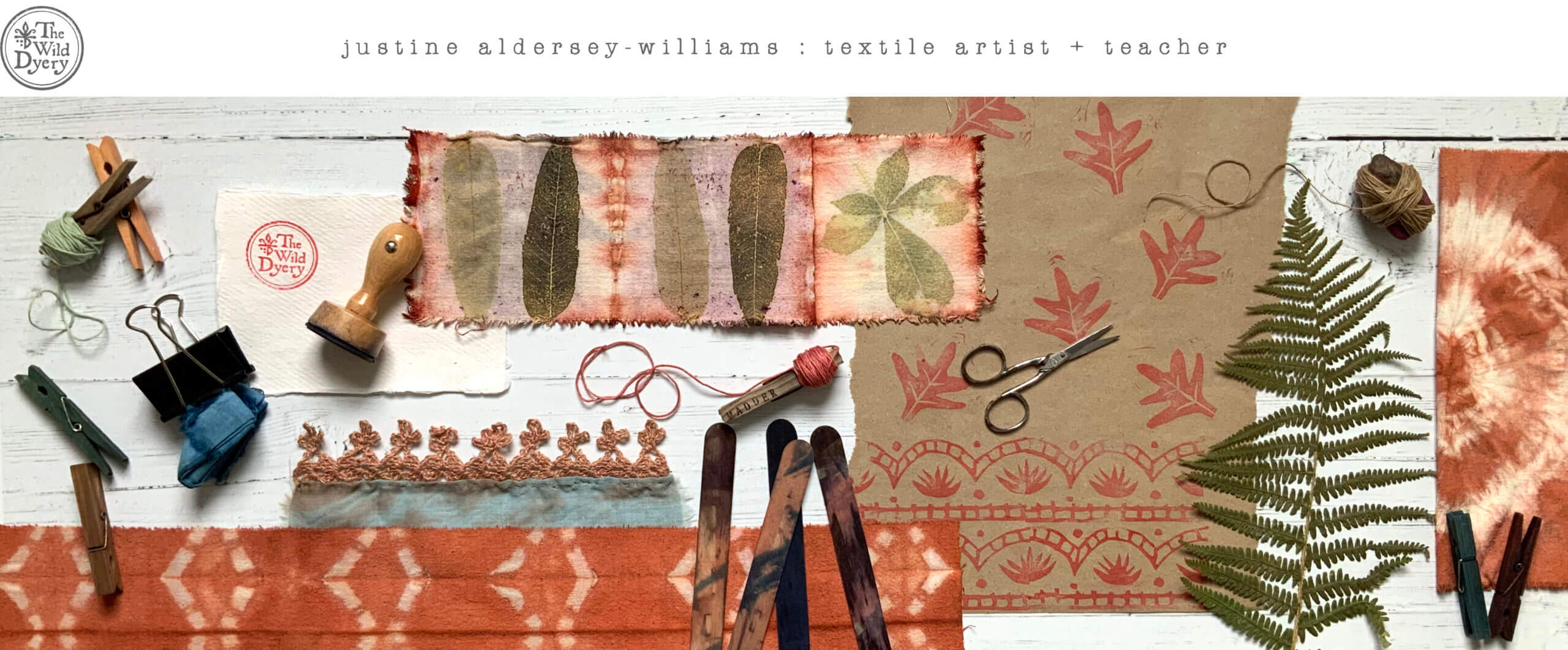
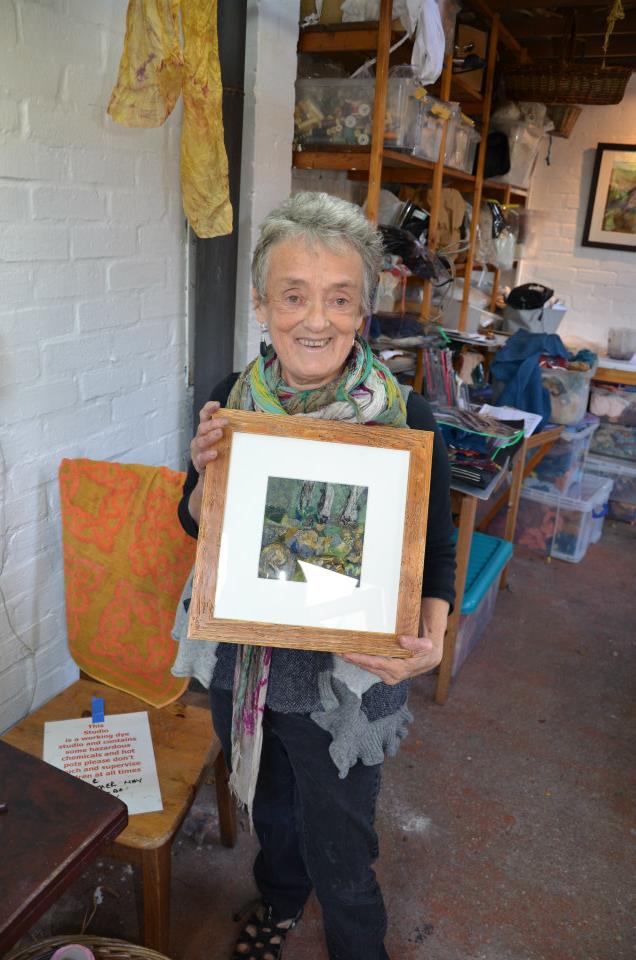
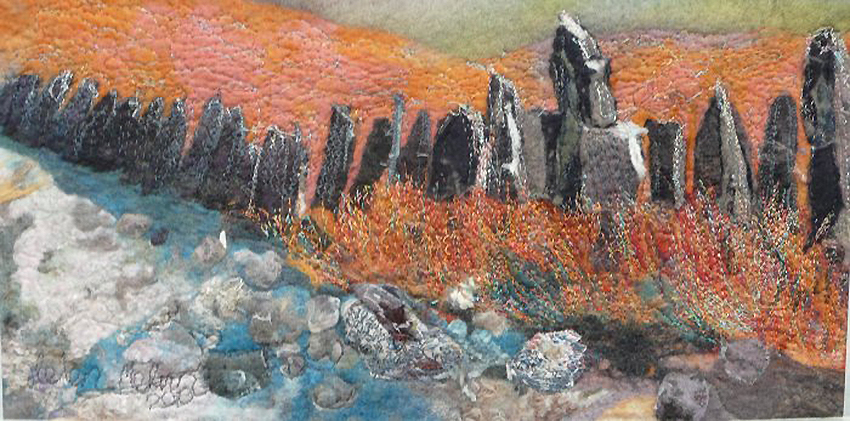
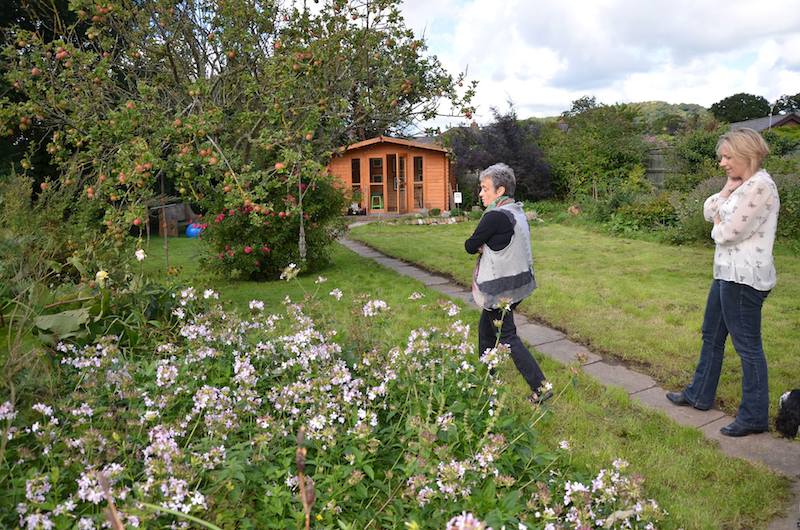
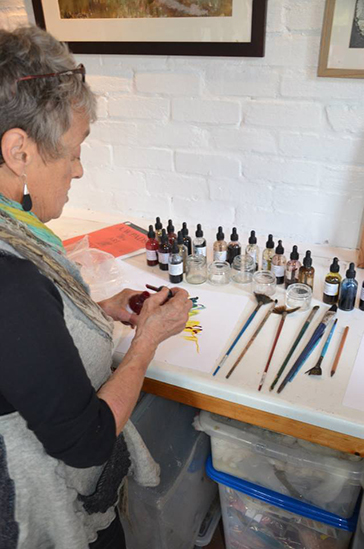
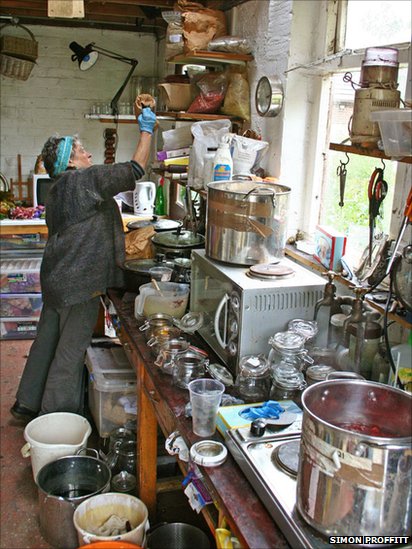
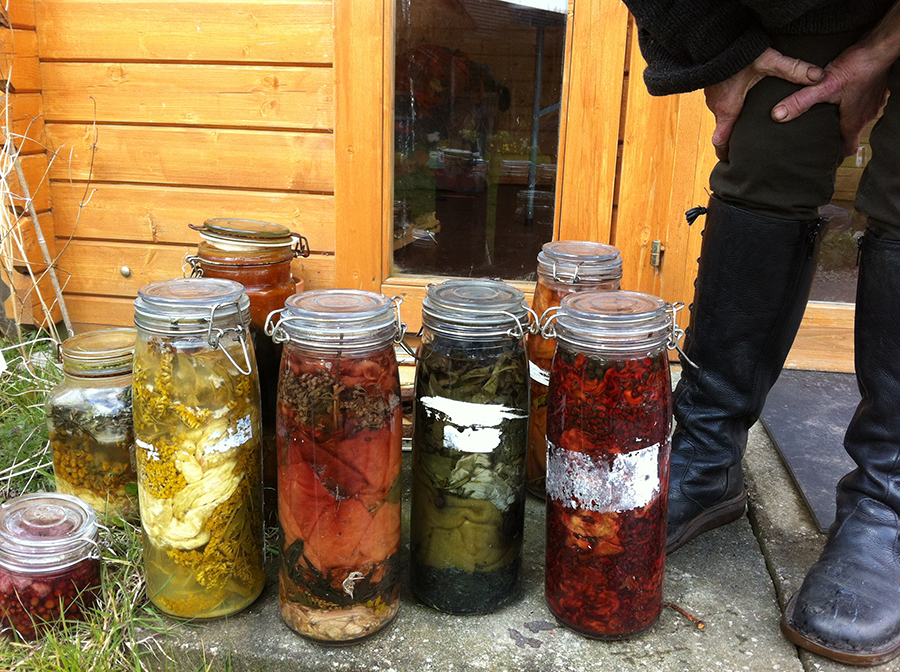
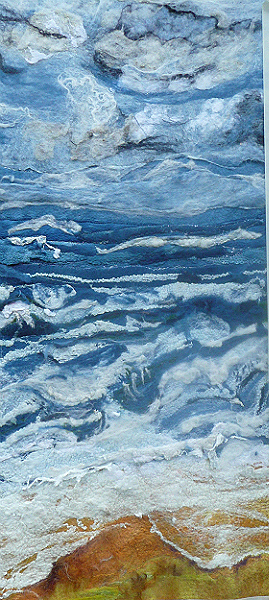
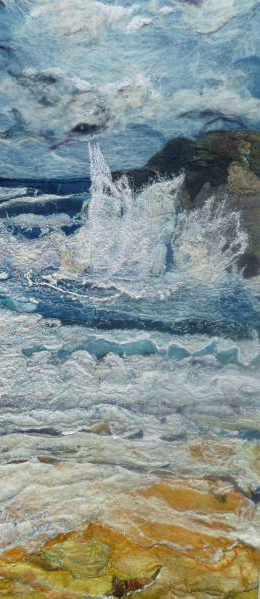
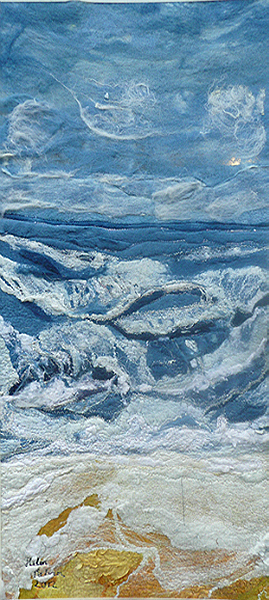
Leave a Reply